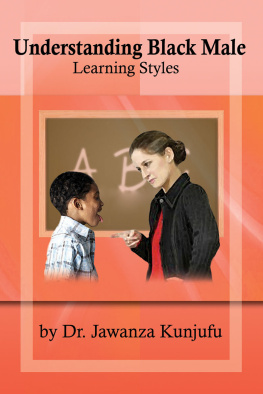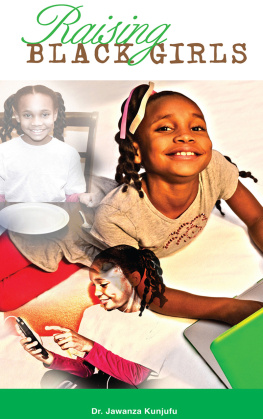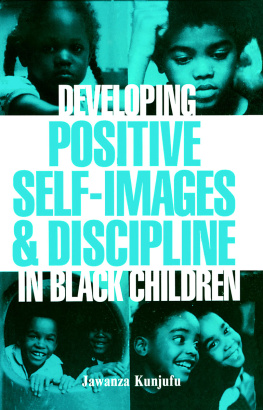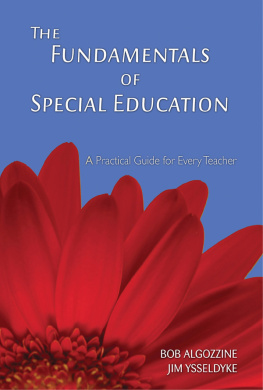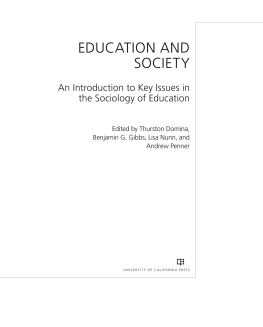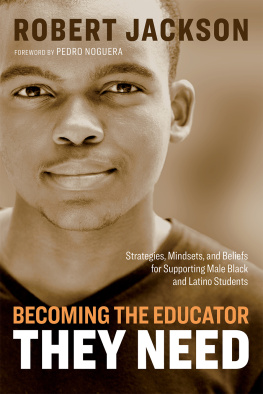
Front cover illustration by Damon Stanford
Copyright 2013 by Jawanza Kunjufu
All rights reserved.
First Edition, First Printing
No part of this book may be reproduced, stored in retrieval systems or transmitted in any form, by any means, including mechanical, electronic, photo-copying, recording or otherwise, without prior permission of the publisher.
Printed in the United States of America
ISBN #: 1-934155-82-9
ISBN #: 978-1-934155-82-0
DEDICATION
This book is dedicated to three Black males in eighth grade. Their names are Tyrone, Antoine, and Jamaal. They have similarities and differences. Tyrones mother is a drug user and is being reared by his grandmother. They are poor and he attends an inner city school which is 100 percent African American. His major challenge is trying to avoid gangs and not being shot. There have been over 400 murders in his city this year. Antoine is being raised by a single, college-educated mother. He attends a charter school in a working class neighborhood. The school is equally divided between African Americans, Hispanics, and Whites. Jamaal lives in an affluent suburb with both parents. Only 10 percent of the students are African Americans. What they all have in common is they read at the sixth-grade level. They have been retained once. They have spent some time in special education classrooms and they have been suspended at least once.
Contents
Preface: The Most Important Question Facing Black Males
Educators, how would you answer that question? What would your Black male students say? What does the mass media promote? Which answer will give you a greater chance of securing a grant? Which answer creates more fear and anxiety?
The truth is that despite the educational crisis facing Black males, more Black males are going to college than prison:
- Black males in college 1,400,000
- Black males in prison in 841,000
Let that sink in. Yes, 841,000 Black males in prison are too many. One Black male in prison is too many. However, despite their abysmal GPAs, low scores on state and national exams, referrals to special education and remedial reading, suspensions, and high dropout rates, more Black males are in college than in prison. This is a testimony to their innate brilliance, and I thank God every day that the school system has not and cannot destroy them. Our boys dont even know how gifted and blessed they truly are. We must convince them that they have a greater chance of going to college than prison.
All my questions, research, and consulting experiences have led me to an inescapable conclusion: We must change school culture to help all children reach their fullest potential, and the group that would benefit the most from a new school culture would be Black boys. As this book, Changing School Culture for Black Males, unapologetically advances, our boys deserve the same attention to their holistic development that other students receive.
Let the cultural transformation of schools begin with truth and faith, not lies and fear.
Introduction: What Black Males Need to Be Taught
Educators, do you like Black boys? Do you respect Black boys? Do you bond with Black boys?
Have you ever asked Black boys if they like attending your school? What do they like about being in your school? What do they dislike about your school?
Is your school fair to Black boys? Are the rules enforced fairly across race and gender?
How many boys in your school have had their spirits broken? This is an important question. How do we assess and measure the degree to which a boys spirit has been broken? How are the spirits of Black boys being broken? How do we begin the process of repairing and restoring the spirits of Black boys?
Every time I see a Black boy standing in the corner of a classroom, I cringe. When I see a Black boy standing outside the classroom door, I wonder if the teacher could have found a better way to deal with the boys behavior. When I see Black boys waiting in the principals office, I know theres a better way, but I wonder if educators simply lack the will to try.
In workshops, I tell my audiences to go visit a kindergarten class and observe Black boys. These boys are eager, they sit in front of the class, theyre on task. They love learning in kindergarten. Now visit a ninth-grade class. The boys are no longer sitting in the front. Theyre now sitting in the back of the class. Theyre sleeping, theyre distracted, and some are disruptive. No longer are they asking questions or staying on task.
Something happens to our boys between kindergarten and ninth grade. I believe the three critical grades for Black boys are kindergarten, fourth grade, and ninth grade. Of those, the most critical is fourth grade, and Ill explain why later in this book.
What happens to Black boys spirits between kindergarten and ninth grade? When a boys spirit has been broken, can it ever be healed? How can schools prevent the spirits of Black boys from being broken?
This book will take a critical look at the spirits of our boys. Well discuss what we can do to maintain their high level of enthusiasm in kindergarten and how to avoid their low spirit level in ninth grade.
This problem is much deeper than closing the racial academic achievement gap. We must close the relationship gap between Black boys and educators. But it goes even deeper than that. Try teaching a student with low self-esteem. Too many Black male students have low self-esteem. Later, in the book we will make a distinction between self and school esteem. What are schools doing to deflate the self-esteem of Black boys? Self-esteem is inextricably linked to spirit. If boys spirits are broken, their self-esteem will be low. Unfortunately, this is a chronic, consistent problem Ive seen in schools from Harlem to Compton. This book will look at what educators, administrators, and parents can do to enhance the self-esteem of African American boys.
My company, African American Images, publishes a curriculum called SETCLAE (Self-Esteem Through Culture Leads to Academic Excellence). Theres a direct correlation between self-esteem and academic achievement. Whats more, weve found that school culture is a key factor that influences self-esteem and academic achievement. School culture is the glue and the conduit through which boys will fail or succeed.
School Culture
So what is school culture? Every scholar will have his or her own definition, but I believe it is simply the matrix of values, norms, curriculum, pedagogy, classroom management, leadership styles of educators and the principal, and overall behaviors (of educators, administrators, staff, students, and parents) that characterize the vision, daily teaching and learning, and socialization of the school family. School culture conveys a certain feeling that can be detected the moment you walk through the doors. It communicates a message and quality of life and learning, and it powerfully influences all who work or attend as students.
For example, if your school has a positive school spirit, this is a defining aspect of your schools culture, and it will influence educators and students to strive toward effective teaching and academic achievement. On the other hand, if your school dcor is marked by metal detectors and your school day by random locker raids, this too gives personality to your schools culture and will motivate all who enter to operate in fear and suspicion. And let me just say that it is difficult to teach and learn in a culture of fear.
Next page

